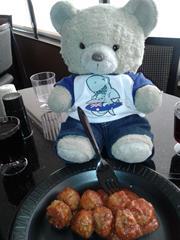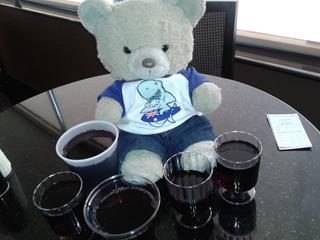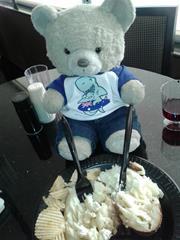Texas - The Lone Star State




Archers Holidays, June 2014





Another Drury's Hotel, another included breakfast - today we had oatmeal, porridge, eggs, sausage, biscuits and gravy, yoghurt, fruit, coffee, orange and apple juice and soft drinks.
We set off for Space Center, Houston,


 - the Official Visitors Center of NASA's Johnson Space Center - and arrived at 8.50am, before it opened. While Patrick sorted out the tickets, we had a look a 747 Space Shuttle transport, just outside the gates.
- the Official Visitors Center of NASA's Johnson Space Center - and arrived at 8.50am, before it opened. While Patrick sorted out the tickets, we had a look a 747 Space Shuttle transport, just outside the gates.
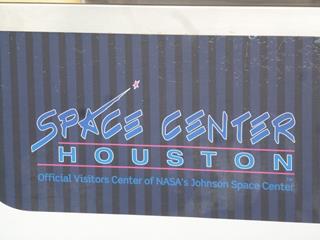
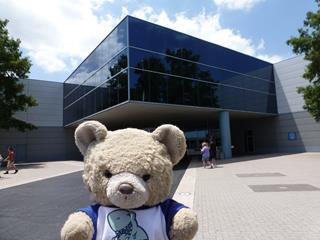
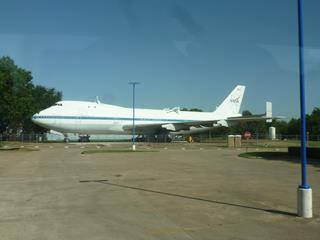
We started our visit with a tram ride through the grounds. I didn't like to ask what the mangle (below centre) was for!
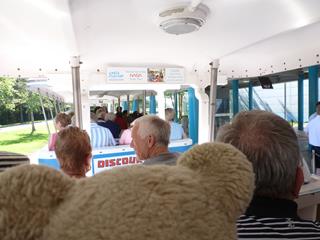
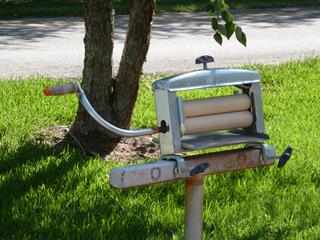
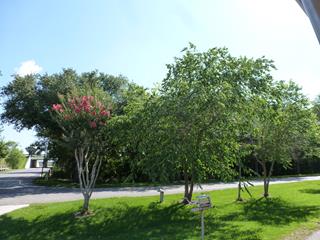
These are the usual tourist trams, like they have at Disney. We were told to remember our seats numbers to return to - we put Colin in charge of that!
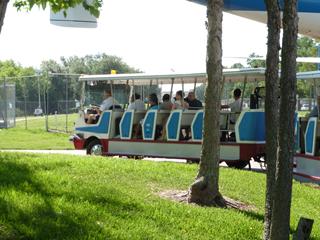
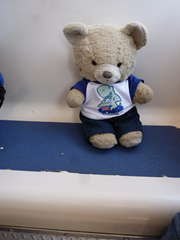
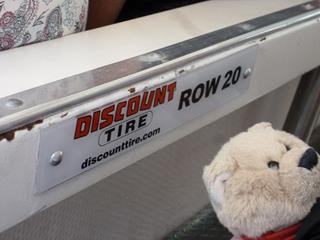
We passed a huge hangar with a Saturn V rocket painted on the side, and then we passed some Texas Longhorn cows. It seems The Longhorn Project. We passed a variety of buildings but I don't remember what they all were now - there's a commentary on the tram, you'll have to go yourself!
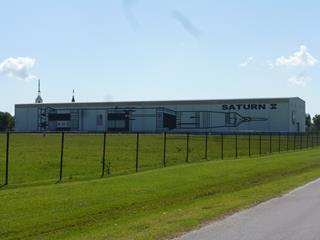
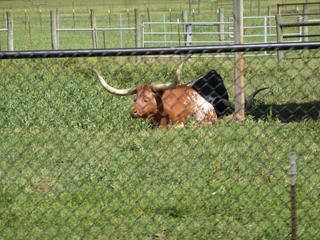
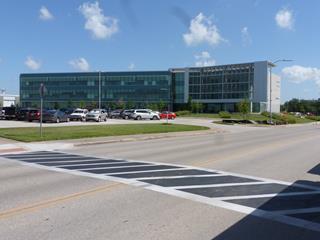
Our first stop was at the Christopher C Kraft Jr Mission Control Center.
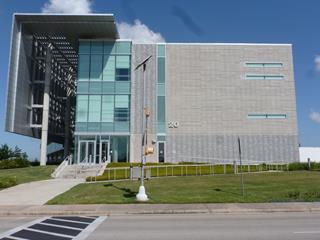
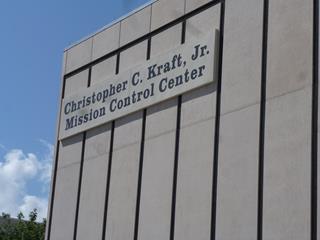
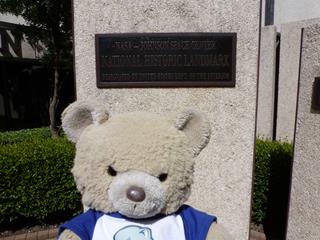
This building was where the Apollo Moon Landing expeditions were controlled from - the Apollo Mission Control Center is a National Historic Landmark.
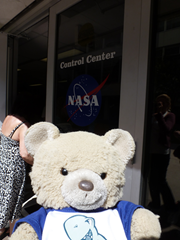
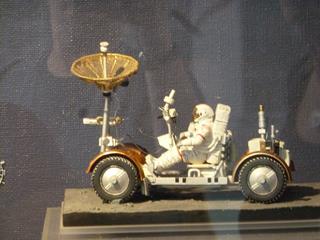
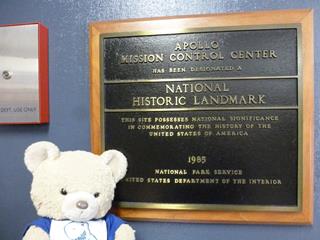
Wowee, feel the history in here. Beyond the glass are the work stations from which the Mission was controlled, they are labelled for the various tasks. On our side of the glass were a few rows of theatre-style seating where invited guests could watch. Apparently even the Queen had been in here.
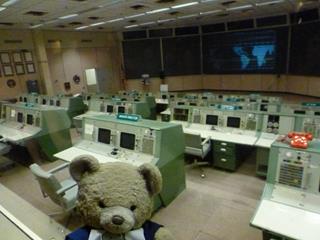
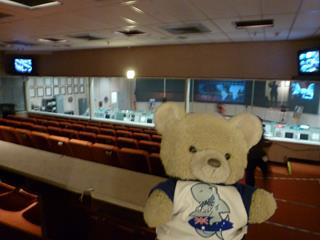
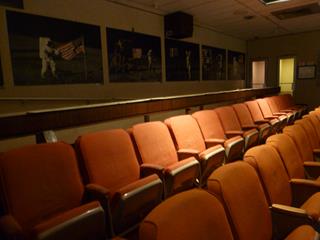
We saw the Mission Director's station, a flag that had been to the Moon and, on our way out, we saw this photograph of the Apollo 11 crew - Neil Armstrong, Michael Collins and Edwin "Buzz" Aldrin. Armstrong and Aldrin were the first men to land on the moon, while Collins stayed on the ship.
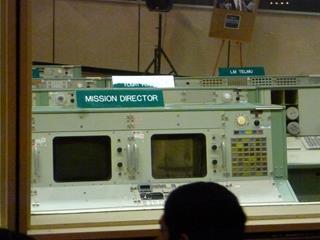
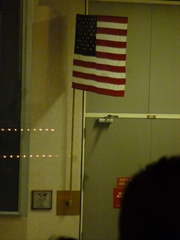
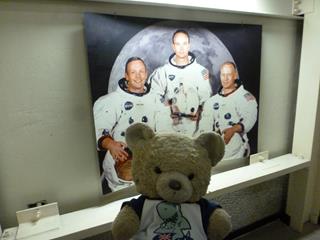
Outside of Mission Control we hopped back onto the tram and passed some scary-looking liquid nitrogen containers.
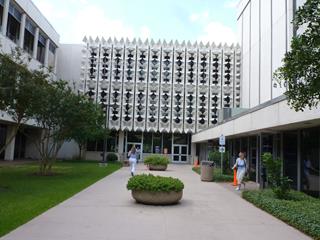
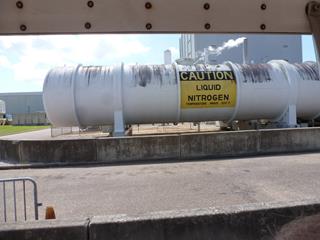
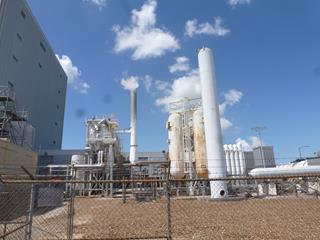
Our second stop was at the Space Vehicle Mockup Facility. We saw a short film, then headed onto a walkway overlooking this vast training and testing area for old and new space missions. There's a mockup of the International Space Station in here (below centre and right). Each of the modules in space are replicated here.
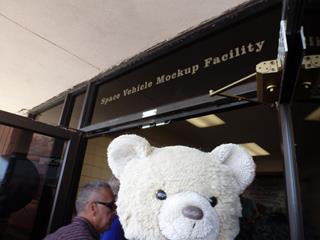
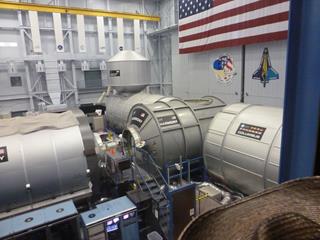
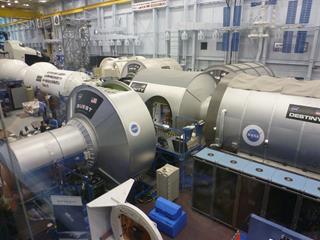
As we walked along, we would stop occasionally and our guide would explain various parts to us. Below right is some kind of space suit - maybe a Manned Manoeuvering Unit (MMU) for spacewalks.
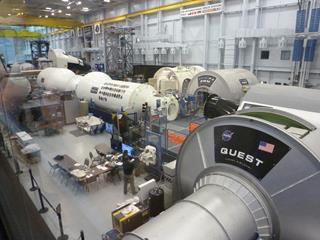
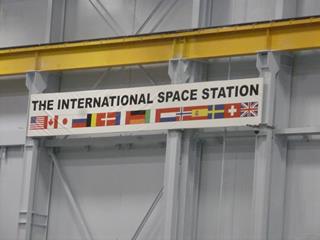
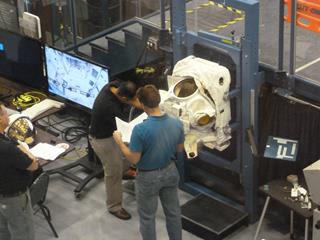
Further on we saw the nose of a Space Shuttle - a crew trainer - and a pair of space legs (well, okay the space suit anyway!) The beige rounded craft to the left of my head is a mockup of Soyuz - the crew rotation vehicle. This is how our astronauts now get to the International Space Station.
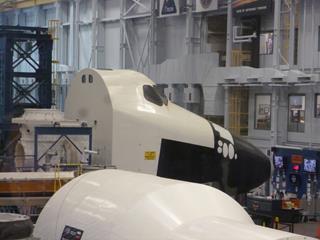
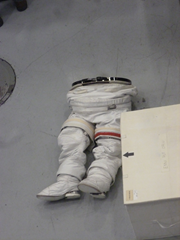
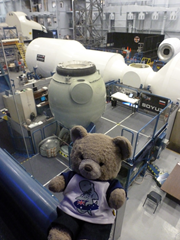
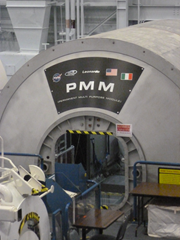
Not sure what they do with the driveable Space Shuttle on wheels! Below right is the Precision Air Bearing Facility provides a two-dimensional simulation of a weightless environment, by floating objects on a thin cushion of air.
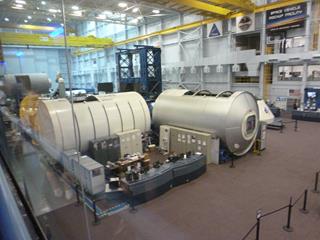
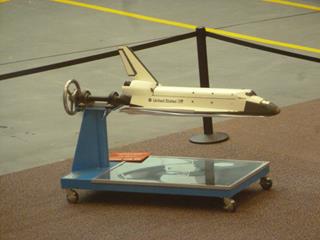
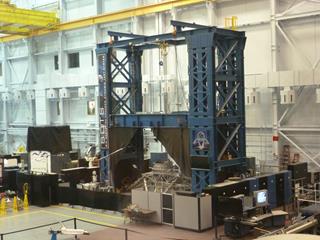
There were some more space machines - they do look very sci-fi movie-esque!
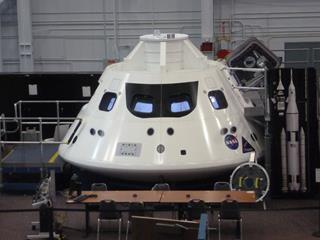
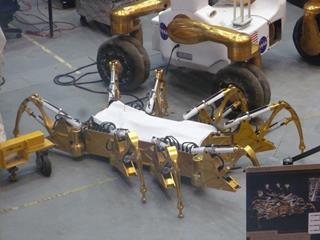
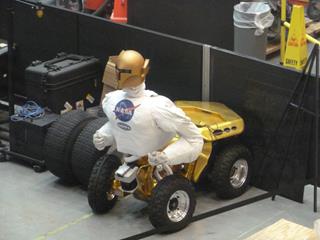
They had a Space Exploration Vehicle here, as well as a robotic arm, like you will have seen on the Space Shuttle - actually, this was the Multipurpose Remote Manipulator Development Facility to give it its proper name. It was very cool to be able to see this activity and see the Space Programme still continuing, even without the Space Shuttle. Soon, our visit was over and we had to return to the tram.
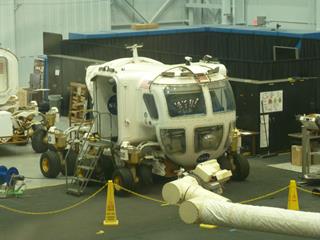
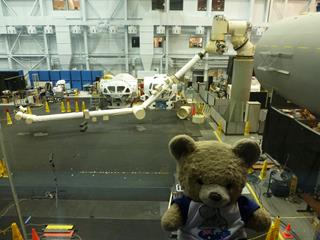
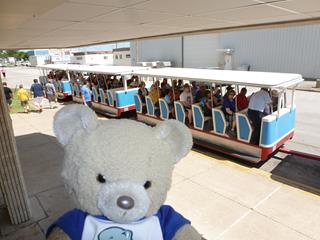
We passed a few more buildings before briefly stopping by the Johnson Space Center's Memorial Tree Grove. It seemed a peaceful spot.
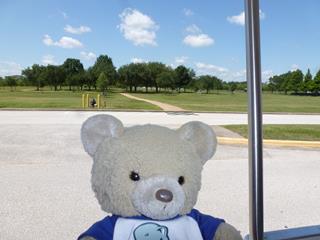
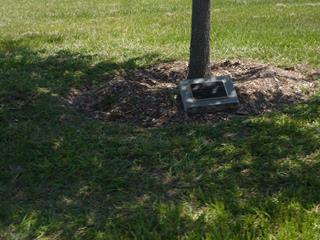
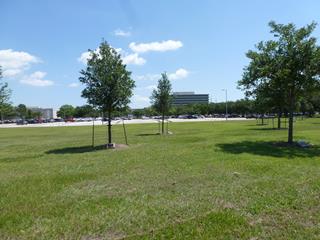
Our final stop was at the Rocket Park. We could take as long as we liked here as the shuttles would be round every twenty minutes or so, and some people didn't stay long, but as we were looking at the rockets outside, a guide came out to say he was about to start a talk about the Saturn V inside and the Apollo Program. We headed inside to find out more.
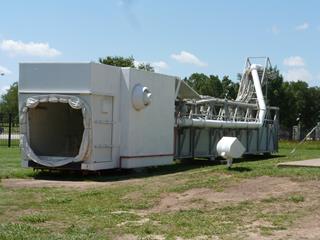
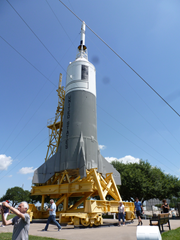
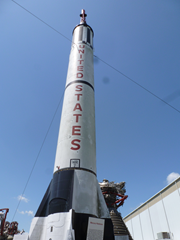
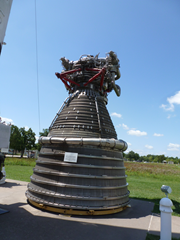
Inside this building is a Saturn V rocket - like I've seen at the Kennedy Space Center Visitor Complex over in Florida. This is part original parts intended to go into space, and part mockup, but is the most real version of the Saturn V NASA has left. It's HUGE. But I already knew that. I've seen the one in Florida many times.
The cluster of five rockets behind me - the F-1 Engine - would provide the initial thrust to the Saturn V first stage launch vehicle. The engines would burn for about two and a half minutes, taking the Saturn V to about 41 miles high with a speed of approximately 6000 miles per hour. Each engine provided 1.5 million pounds of thrust! This stage only lasts about 2.5 minutes, taking the vehicle and payload to 38 miles, before separating and burning up in the Earth's atmosphere.
Our guide was Lee Norbraten and as we walked alongside the various components that made up the Saturn V rocket he explained the various stages of launch. This second stage also contains five engines which burn for about 6 minutes, taking the vehicle and payload to 115 miles before it is also, then discarded.
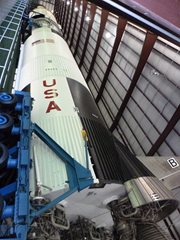
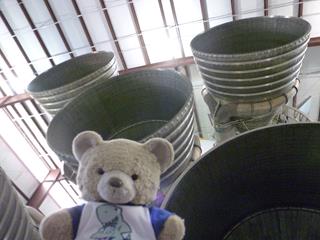
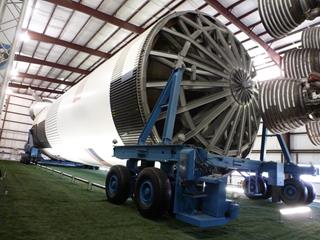
Below centre and right is the Third Stage, which contains just one, J-2 engine. This burns for about 2.75 minutes, pushing the spacecraft to orbital velocity of 17,500mph. Yikes! This stage is shut down with fuel remaining and stays attached to the spacecraft in Earth orbit. It is then reignited to propel the spacecraft to the Moon (at 24,500 mph) before finally being discarded.
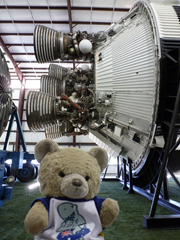
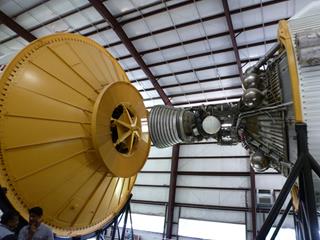
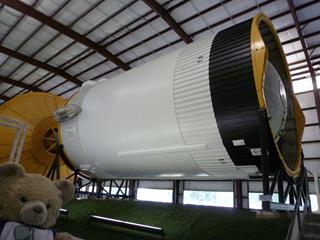
The remaining components of the Saturn V include the Lunar Module (the white part below left and right) which was designed to carry a crew of two from lunar orbit to the surface of the Moon and back. Above that was the Service Module - the silver part below - and this contained the various fuel and life support mechanisms to keep the astronauts alive - with power cells, hydrogen and oxygen tanks.
Just above my head, below centre, is the Command Module which contains control engines and components of the Earth Landing System. This housed the crew accommodation, equipment bays, freshwater tanks, as well as various spacecraft systems.
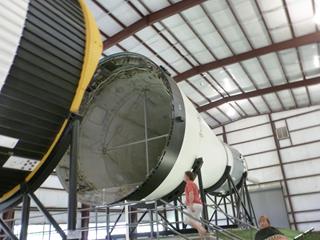
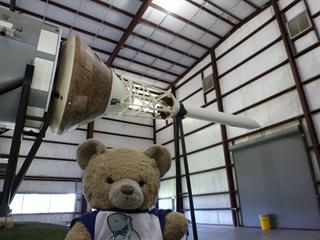
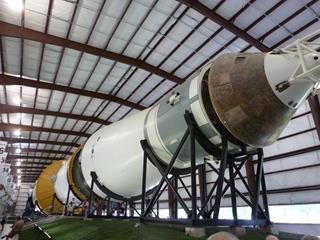
Below left is our guide, Lee. He was very informative about the Space Program, having worked at Johnson for many years. You can't really get a sense of scale of the Saturn V Rocket as it is just so huge. This particular version of the Saturn V is on loan from the Smithsonian National Air and Space Museum in Washington DC (go see it!) where it was stored outside. While parts of it come from the live components that might have been used during the Apollo Program, there are some fabricated parts too.
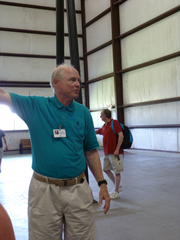
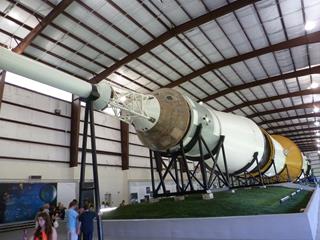
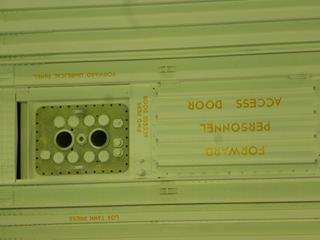
Along the walls of the hangar is an introduction to each stage of the Apollo Program. There is a picture of the crew and some information about each of the missions. Below left is a picture of the crew of Apollo 1 in training for their return to Earth with an ocean landing. Unfortunately, they would never need to use those skills. In January 1967, a flash fire occurred in the Command Module and the crew were killed. They were Lt Col Edward H White, who previously performed the first extravehicular activity during the Gemini Program, Lt Col Virgil I Grissom, a veteran of Mercury and Gemini missions and Roger B Chaffee, who was preparing for his first flight into space.
Below right, I have joined Armstrong, Aldrin and Collins for the Apollo XI mission to make the first landing on the Moon. All the other Apollo missions are represented on these billboards, but I know you can't cope with too much information!
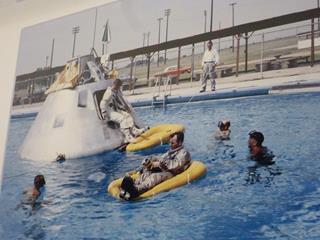
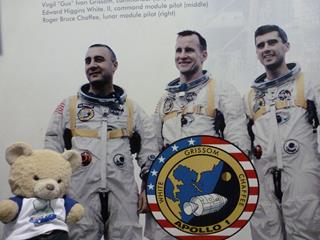
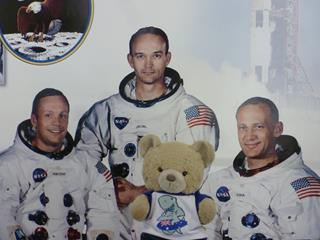
With our thirty (more like forty) minute tour over, we headed back outside to finish looking at the Rocket Garden. We had just missed a shuttle so knew we had about twenty minutes, but as the line was getting longer we decided to go wait for the next one. Of course, I had to have a quick drive of the shuttle - it was pretty cool. Maybe they could hire me?
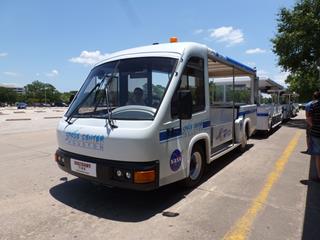
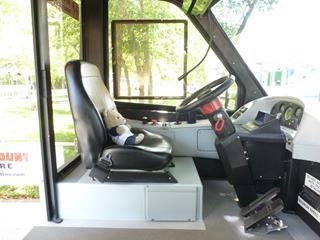
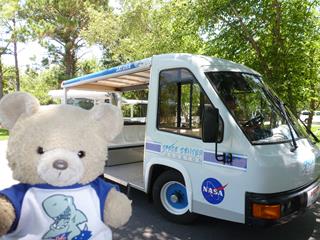
Back where we started, we headed into Space Center Plaza. In here they have a section dedicated to the Space Shuttle. Below left is a Space Shuttle Main Engine. There's also a model of a Space Shuttle on the back of the Boeing 747 Transporter, which would return a Shuttle that landed outside of Florida back to base or wherever they chose.
For my classier readers, yes, that picture below right is a Space Shuttle toilet. I know you'd want that picture. I was right, wasn't I?
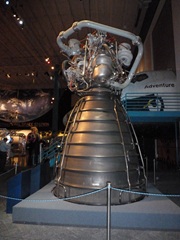
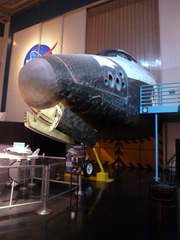

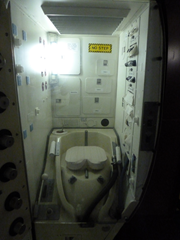
They have stairs up to a mockup of parts of the Space Shuttle, like this storage area (below centre) and the flight deck (below right).
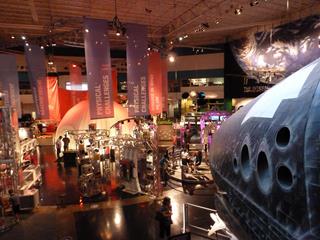
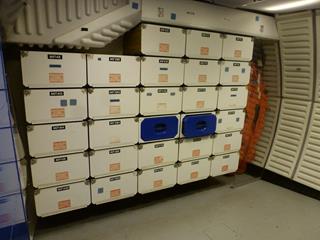
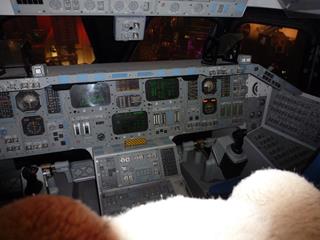
Sadly the flight deck is protected by a clear perspex guard so I assumed I wasn't supposed to sit in the seats and play and stuff, so you only get to look this time.
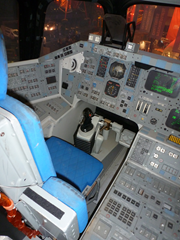
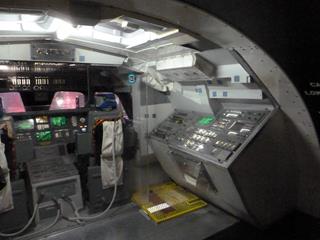
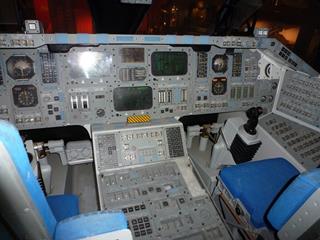
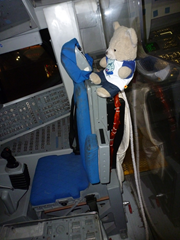
They have displays of space machinery (or replicas) scattered around the big hanger that contains the museum part of the Space Center. In the centre we spotted some tall pillars from which the more intrepid (or slightly nuts) folks would climb up then step off - dangling on a wire - presumably giving them some sort of feel of the weightlessness on Mars, in this case. Di declined to have a go (we were running short of time, she said!)
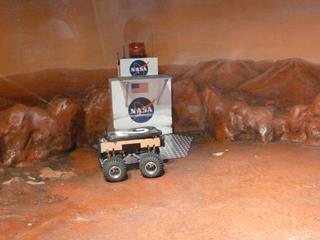
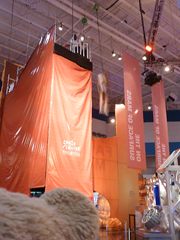
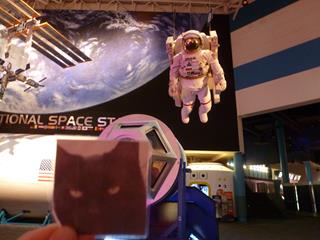
We did manage to see one of the films on show about Space Exploration, which took about fifteen minutes and outlet into another area with mock-ups of space exploration, including the moon landings. Below left is the actual Gemini spacecraft flown for the Gemini 5 mission - the third manned flight of the Gemini Program. John Young, who flew in the first Gemini mission, described sitting in here as like "sitting in a phone booth that was lying on its side" - and it was for two astronauts! That's why they called it Gemini.
Below centre is the actual Apollo 17 Command Module, the last mission of Project Apollo. It was the last manned spacecraft to have travelled to the Moon.
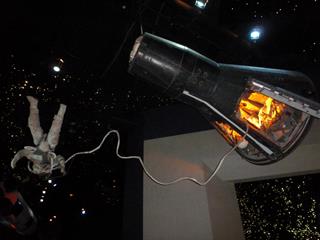
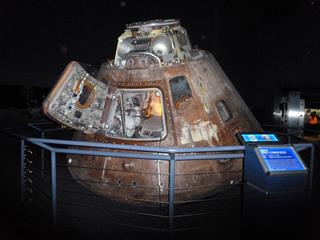
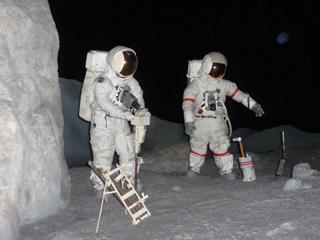
To the right hand side of the moonscape you can see below left, is a Lunar Rover Trainer. Not required on the Moon's surface there was no steering wheel, nor brakes. It could reach 10mph and travel 55 miles and had a television camera mounted on it.
Below centre, you can see they even have a little piece of moon rock for you to touch. It was brought back by the Apollo 17 astronauts from the edge of the Sea of Serenity. This is one of only eight pieces of lunar rocks available to be touched by the public - I know I've touched one at the Smithsonian in Washington DC before. The rock is 3.8 billion years old by the way.
The Apollo-Soyuz Test Project aimed to link the spacecraft of the two space-travelling nations, the United States and the Soviet Union. Neither ship was designed to connect to the other, but with much cooperation, the mission was successful.
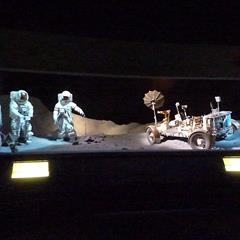
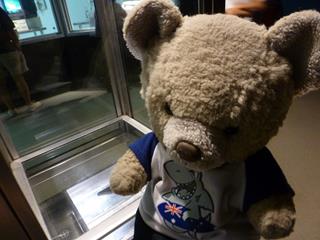
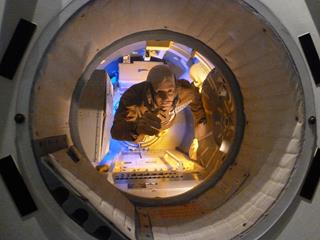
They have the actual Skylab trainer here - the America's first Space Station. It was designed for longer term living in space, as well as for experimentation. It was created using the final stage of the Saturn V rocket to become a habitable living space - with bunks and even a shower (below left) - and work space, that was almost as big as a three-bedroom house. Three crews spent 171 days on Skylab.
The first four Space Shuttle missions had ejector seats for the commander and pilot. As the crew size increased Commander Vance had these removed - World War II studies had shown significant guilt felt by commanders who had ejected leaving behind their crew so the decision was made to remove the escape system.
The blue seat below was a Space Shuttle mock-up used in training at Johnson Space Center.
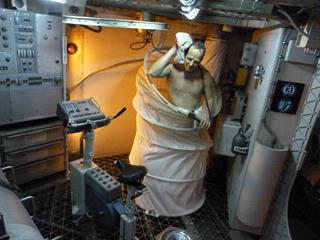
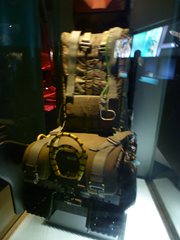
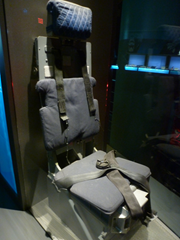
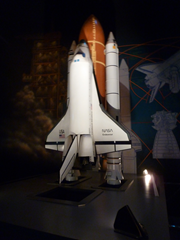
We made a quick dash through the two gift shops in the main exhibit. There was some different stuff from one to the other, which meant an even quicker dash back to the first shop to grab something Di liked the look of. I picked up a NASA pin badge. The shop is nowhere near as big as the main store at Kennedy Space Center Visitor Complex in Florida, but they still had some pretty neat stuff. Including some space stuffies, though no stuffie-less outfits for me!
There was just time to dash outside and get a closer look at the 747 Tranporter like we'd seen in Florida when we went to see Endeavour shipped out to the Space Museum in California. It was an awesome sight, seeing the Shuttle on the back of a 747, but pretty cool here to see one of the 747s.
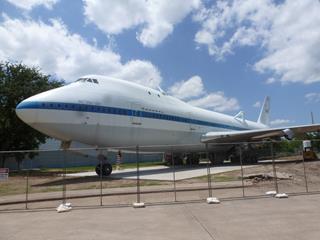
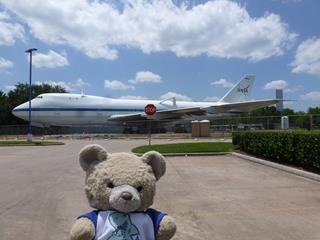
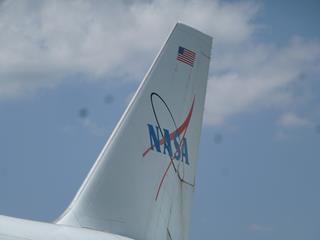
Across the parking lot was a replica Space Shuttle too. This is a full-size mock-up. Once we returned to the bus and headed out we grabbed some pictures of the T-38 Talon aircraft, which are used by the astronauts. I would have liked maybe another hour here, but we saw quite a lot in five hours and I can imagine the non-space fans could be a little bored. We had to rush at the end though. It's not as big as the Complex in Florida but it was great to see some of the Apollo and earlier Program artifacts.
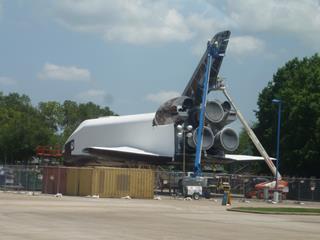
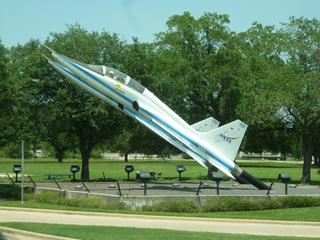
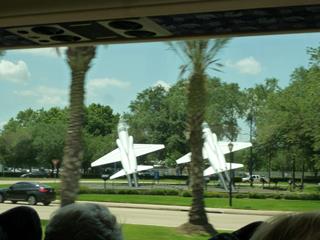
We set off to our next stop, passing another oil refinery and passing the Fred Hartman Bridge.
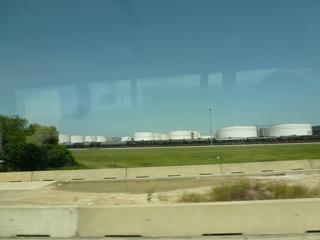
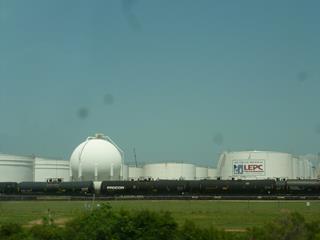
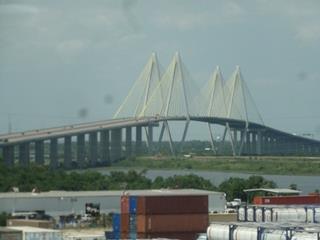
Our next stop of the afternoon was at the San Jacinto Monument.


 The Monument commemorates the 1836 battle fought on the site that gave Texas its independence from Mexico. The building opened in 1939.
The Monument commemorates the 1836 battle fought on the site that gave Texas its independence from Mexico. The building opened in 1939.
Initially Patrick had suggested we could - at our own expense - go to the top of the monument if we wished to, but when we got there, we were led in to the lift and up we went, at no extra charge. As we stood in line we got to look at the Texas Cordova shellstone walls. The tower is 570 feet high but we'd only get to 489 feet as that was the location of the observation deck.
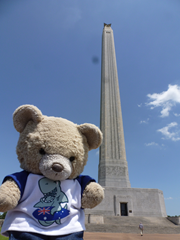
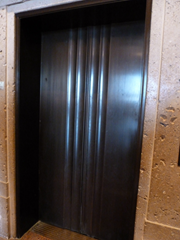
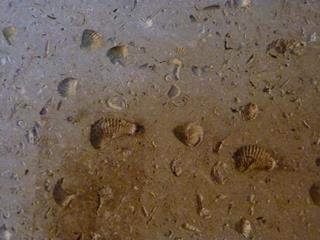
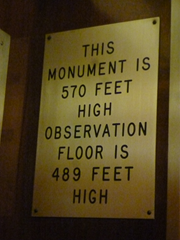
What a great view - we could see more of those oil refineries and the river in the Port of Houston.
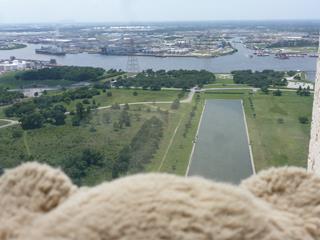
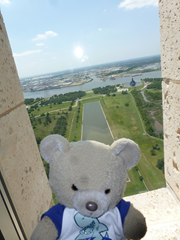
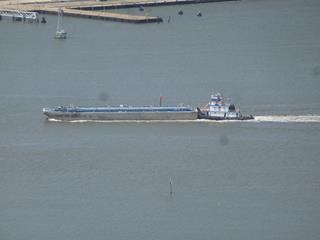
Space up here was a little tight so they only allowed so many up in the lift at a time, though there was no pressure to rush you out.
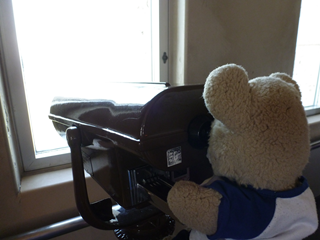
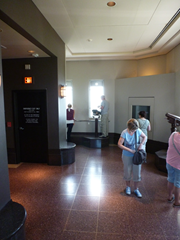
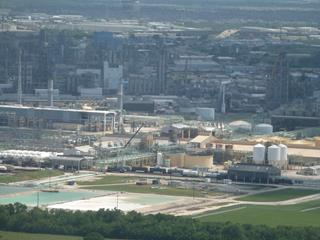
From up here we got our first glimpse of the Battleship Texas which would be our next stop. It's not far away as you can see.
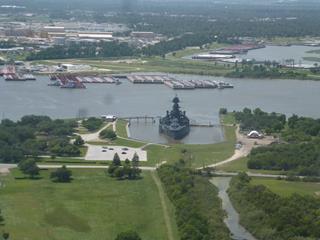
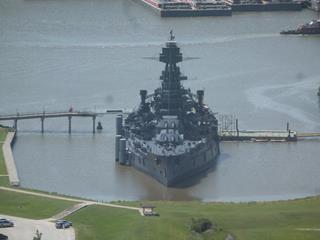
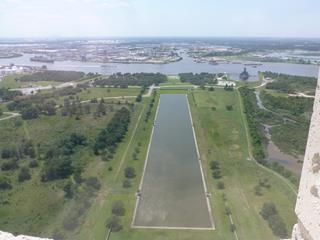
Back down in the lobby we got to take a look at a collection of dioramas, representing Texas history. They were built in the 1930s by Edward Wilkinson and his staff.
Below left is Steamboat House, Huntsville where Sam Houston died (well, he actually died in the full-size version!) Below centre is a model of the second Capital, built in Austin. Below right represents Washington-on-the-Brazos, where the Texas Declaration of Independence was signed in 1836.
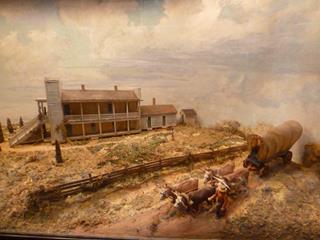
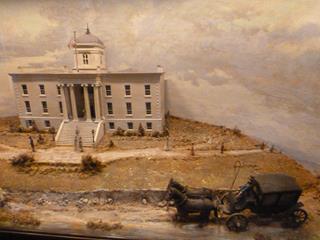
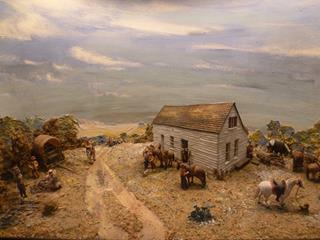
They have a collection of exhibits on display in the museum area at the base of the Monument. The first railroad in Texas was the Buffalo Bayou, Brazos and Colorado, on which construction started in 1851. Below centre is a model of the USS Houston, which was sunk in 1942.
The display, below right, is dedicated to Sam Houston. He served well in the second war against England, then left the Army to study law. He was elected to the US Congress in 1823 and became Governor of Tennessee in 1827. He moved to Texas in 1832 and soon rose to prominence, involved in the Declaration of Independence from Mexico and was elected commander in chief of the armies of Texas. In April 1836, his force defeated Santa Anna and secured Texas's Independence. That year he became the first President of the Republic of Texas. Once Texas became a State in 1845, Houston was elected to the US Senate again, then in 1859 he was elected Governor of the State of Texas. In 1861, he objected to the secession of Texas from the Union and he was removed from office. He retired from public office and died in 1863. Busy guy, huh? Thought you'd wanna know.
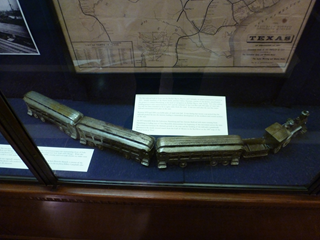
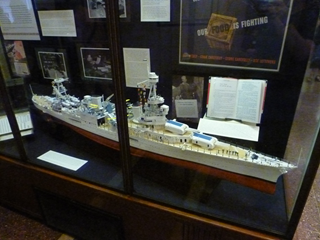
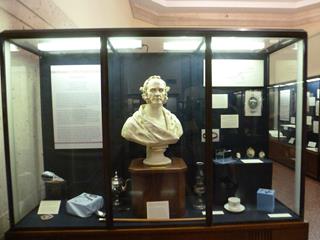
There was just time to dip into the small gift shop - t-shirts, post cards, the usual stuff and a few other interesting things. I got a great deal on some badges for my pals! Then we headed outside to walk all the way round the Monument. They have the history of the battle carved into the stones at the base. On top of the Monument is the Lone Star of Texas.
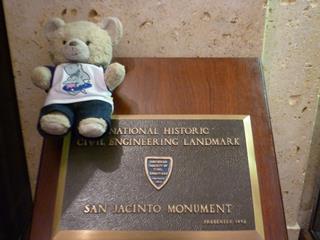
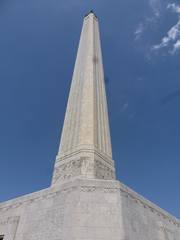
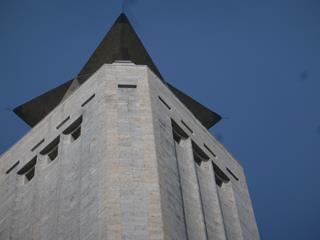
The picture below, second from the right, has yours truly sitting on the steps out front. Can you see me? Squint! I thought you might like to see the cornerstone too.
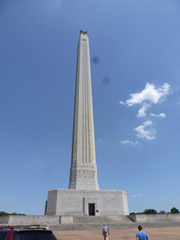
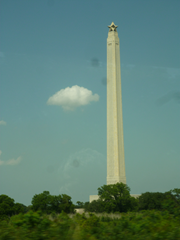
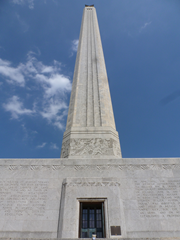
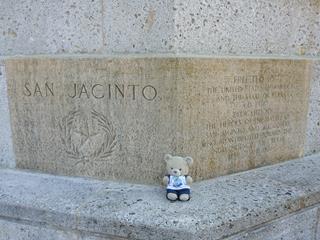
We headed over to the Battleship Texas. Unfortunately, we didn't have time to go onboard. If I'm honest, I'm not sure we were supposed to take the time to go into the gift shop but we did. Assistant Paul's brother likes battleships so we had to go buy him a t-shirt. We were last back to the bus but not by much.
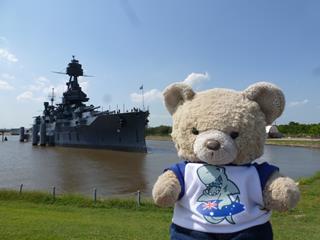
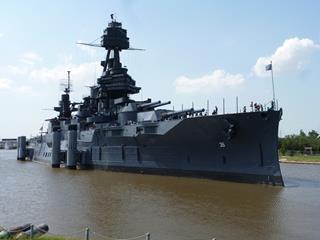
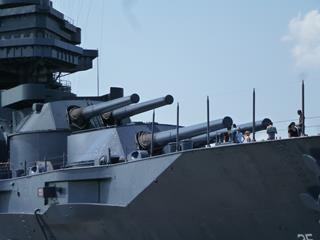
The Battleship Texas became the first battleship memorial museum in the United States back in 1948. This was the anniversary of Texas independence and the battleship Texas was presented to the State and commissioned as the flagship of the Texas Navy.
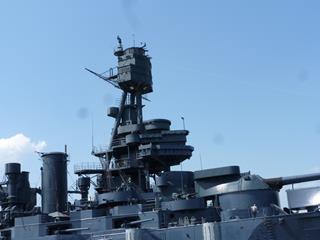
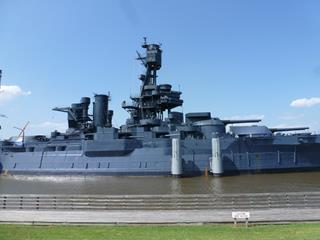
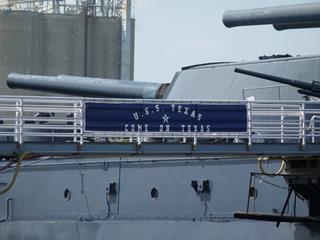
It was time to return to our hotel in Houston. On the way back, we were able to drop Dave off at the Galleria Mall again, so he could grab a taxi as he was off to a sports game. We continued on to the hotel and decided that the hotel's Kickbacks would be enough for us for dinner. I had cheese and broccoli soup, a Bahama Breeze and a hotdog (or three).
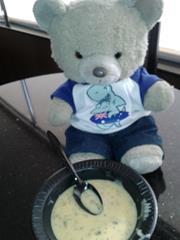
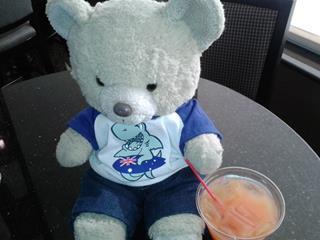
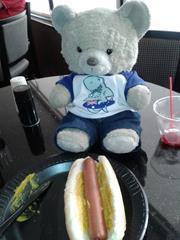
Then I had some meatballs, and, as Dave wasn't in for the night I had some extra glasses of wine, and a baked potato, maybe some potato chips. Well, it would be rude not to eat it after they cooked it for me, right? We grabbed some popcorn and retired to the room for an evening in front of the telly. Then I sent assistant Di out for more popcorn and Pepsi. It was a busy day.
